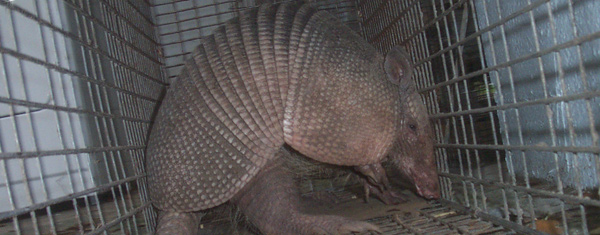- info@wildlife-removal.com
Call us for help in your town
Wildlife Removal Education
How Did Armadillos Get Into North America?
Need armadillo removal in your hometown? We service over 500 USA locations! Click here to hire us in your town and check prices - updated for year 2020.
One of the interesting features about the armadillo is that it is not a species that is native to North America, and indeed it is the lack of predators for the armadillo that has allowed the species to flourish on the continent. The animals originated in South America, and their original habitat was in the warm and moist forests that covered the region for so long. However, it was a dramatic change in the continent itself that finally allowed the armadillos to make the move north, and they have been growing their population ever since. Read the guide What is the Armadillo's Habitat?

Their Origins In South America
There are several species of armadillo that originated in South America, but the one that has become most common is the Nine-Banded Armadillo, which is now the armadillo with the largest range. The woodlands of South America was the habitat for these creatures for several thousand years, and their defensive armor that served them so well in that region, is still a vital part of their survival today.
The Formation Of The Isthmus Of Panama
The continents of North and South America were completely separate continents until the two were connected when the Isthmus of Panama was raised through volcanic activity, creating a land link between the two continents that had developed separately. When you think that the armadillo looks like a creature from another age, the main reason is that it actually is a creature from another age.
The Great American Interchange
Although the rising of the Isthmus was around fifteen million years ago, it was around three million years ago that the exchange of species really started to take place, and it is believed that around that time the armadillos first found their way into Central and on to North America. The tough carapace that had evolved in South America was too resilient, and there were very few natural predators in North America that could come above the armadillo in the food chain, allowing it great freedom to expand its range.
Armadillos In North America Today
Because armadillos do not have much in terms of fat reserves, they do not cope well with harsh winters, which has meant that the northern states rarely tend to see large populations of the species. However, they have a large population in the Southern states, and survive as far north as Ohio and New Jersey, giving them a huge range within the United States.
Go back to the Armadillo Removal page.


















